Flowers are more than just attractive gifts that we offer to our loved ones; they are also a reflection of nature’s exquisite beauty and a sign of rebirth.
Examining the world of flowers may be a fascinating adventure because each bloom has its own distinctive appeal and function. We shall explore the world of “Flowers That Start With B” and find the flowery wonderland’s untold secrets.
Every flower has a unique tale to tell and a specific place in the natural world, from the brash and stunning Black-eyed Susan to the delicate and fragile Buttercup.
So come along on this adventure with us as we learn about the meaning of these interesting flowers that begin with the letter B if you’re ready to be submerged in a world of breathtaking beauty and brilliant hues.
Keep Reading:
- Flowers That Start With A
- Flowers That Start With C
- Flowers That Start With D
- Flowers That Start With E
- Flowers That Start With F
List Of Flowers That Start With B
1. Beaver Tail Cactus
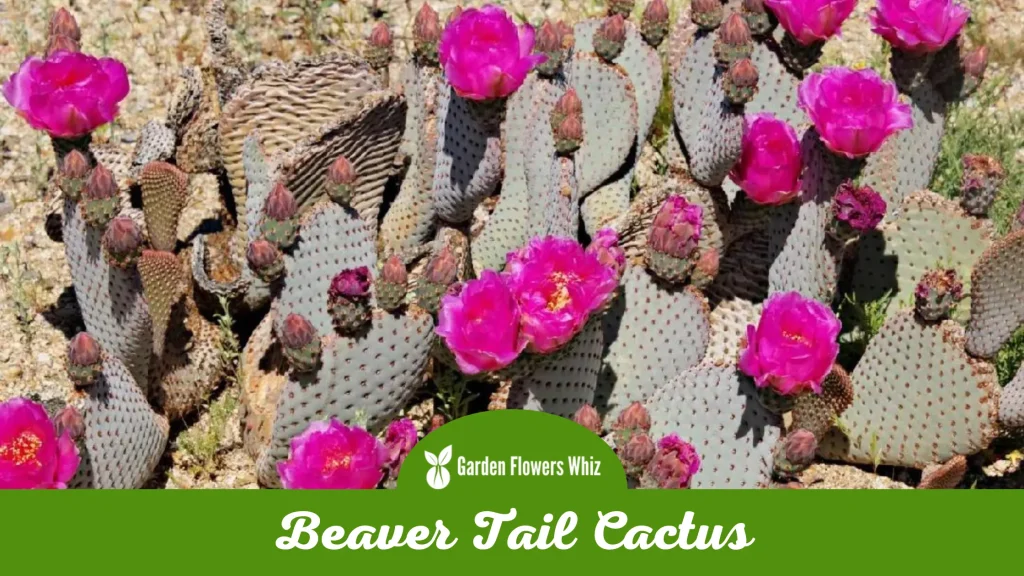
Belonging to the Opuntia genus, the Beaver Tail Cactus, commonly referred to as the Prickly Pear Cactus, is an unusual and fascinating plant.
Native to North and Central America’s deserts, this cactus is distinguished by its paddle-shaped stems that resemble a beaver’s tail.
At a distance, these stems look like they are covered with fur because they are flat and have tiny, barbed spines. The colorful, brilliant flowers of the Beaver Tail Cactus normally bloom in the spring and summer and range in color from pink to red to yellow.
The stems and fruits of the cactus are frequently used in salads, stews, and even desserts in traditional Mexican cooking.
The Beaver Tail Cactus is a fascinating plant that appeals to gardeners and cactus fans alike since it has both decorative and useful functions.
2. Beardtongue
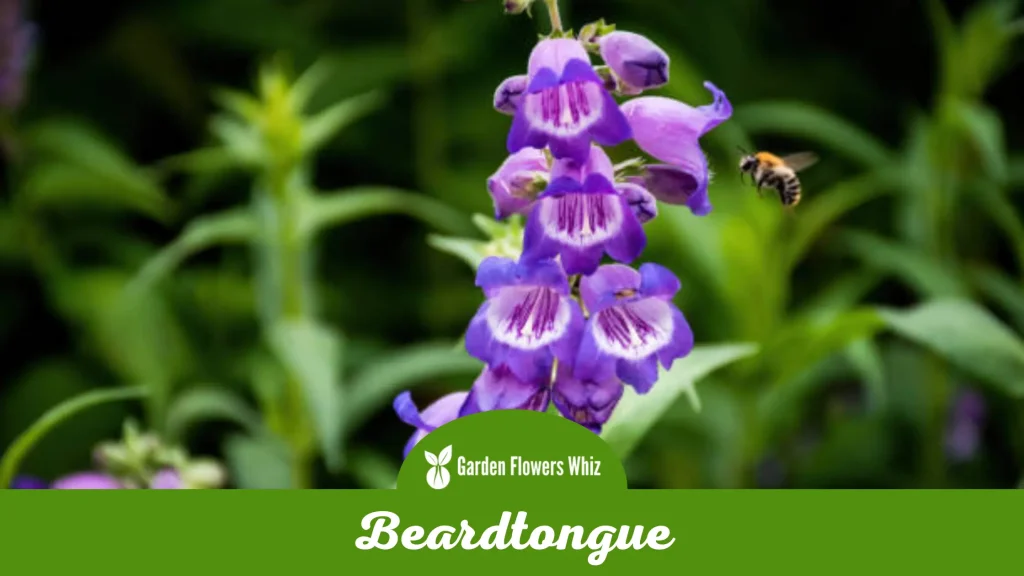
Penstemon, sometimes referred to as bearded tongue, is a well-liked flowering plant that is indigenous to North America. Its name comes from the tiny hairs that resemble a beard on the inside of the bloom, giving it a special and distinctive appearance.
The plant is distinguished by its tall, slender stems and long, tubular flowers, which might be white, yellow, pink, purple, or blue in colour.
Beardtongue is a tough plant that grows well in a range of environments, including full sun and moderate shade, and once established, is drought-tolerant.
It’s a well-liked option among gardeners who want to draw bees, butterflies, and hummingbirds to their yards because these pollinators enjoy the nectar-rich blossoms.
3. Foxglove Beardtongue

The magnificent flowering plant known as the Foxglove Beardtongue, or Penstemon digitalis, is indigenous to eastern North America.
It belongs to the Penstemon family, which is distinguished by its unusual tubular blooms with beard-like shapes. With its tall, trumpet-shaped blooms that range in hue from white to light pink with purple streaks, the Foxglove Beardtongue is no exception.
Due to its beautiful appearance, this plant is popular among gardeners, but it also serves useful purposes. Bees, butterflies, and hummingbirds are among the pollinators that the foxglove beardtongue is known for luring to the garden.
It’s a fantastic option for both novice and seasoned gardeners because it’s simple to cultivate and needs little upkeep. It should be mentioned that the plant is poisonous if consumed; hence this is not advised.
4. Beardtongue (Penstemon canescens)
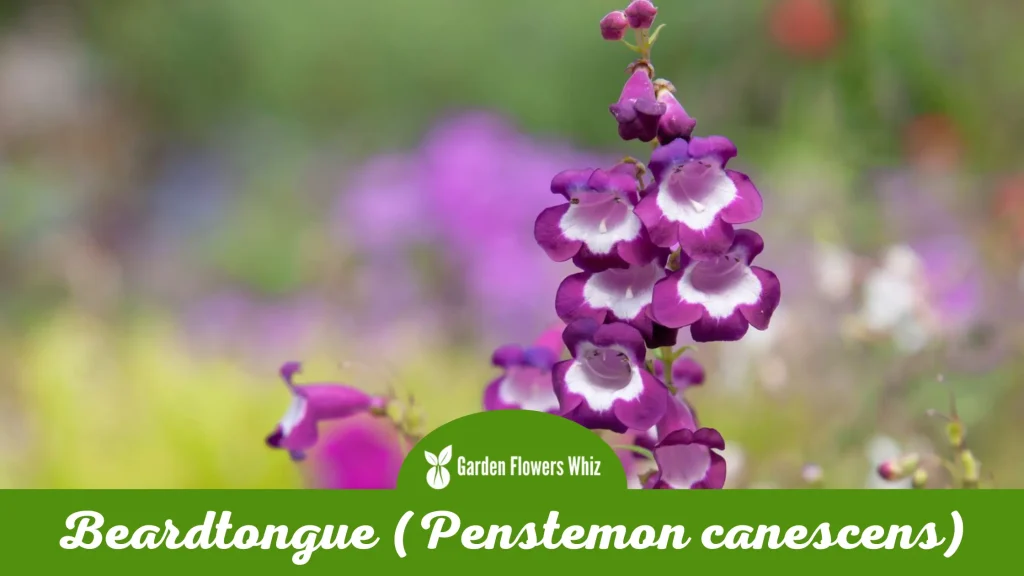
Penstemon, another name for the genus of flowering plants that comprises many diverse species, includes the bearded tongue. Penstemon Canescens, sometimes referred to as the Grey Beardtongue or Hairy Beardtongue, is one of these species.
Native to North America, this plant flourishes on rocky terrain and prairies. Little perennial Grey Beardtongue plants bloom in late spring and early summer with light lavender blooms.
The trumpet-shaped flowers feature five petals and a characteristic throat beard. Furthermore appealing is the plant’s foliage, which is a greyish-green tint and a little fuzzy appearance.
The grey beardtongue serves as a significant source of food for a variety of wild animals, such as deer, rabbits, and birds.
Gardeners also love it because it’s simple to cultivate and needs little upkeep. It does best in well-drained soils and can tolerate both direct sunlight and some shade.
A plant is a wonderful option for rock gardens, borders, or as a ground cover because of its delicate flowers and distinctive foliage.
5. Bearded Penstemon

Penstemon barbatus, sometimes referred to as bearded penstemon, is a stunning flowering plant that is indigenous to Mexico and the southwest U.S.
It belongs to the family Penstemon and is distinguished by its spectacular spikes of tubular, bell-shaped flowers in hues of red, pink, and purple.
The name of the plant refers to the unusual “bearded” appearance of the long, hair-like appendages that emerge from the throats of the blooms.
The drought-tolerant and hardy perennial Bearded Penstemon is simple to grow. It can take moderate shade but does best in well-sun-drained soil.
Gardeners love this plant, and it is frequently utilized in rock gardens, borders, and as cut flowers. It’s also a well-liked option for luring hummingbirds to the yard since these pollinators enjoy the nectar-rich blossoms.
6. Bear’s Breeches (Acanthus mollis)
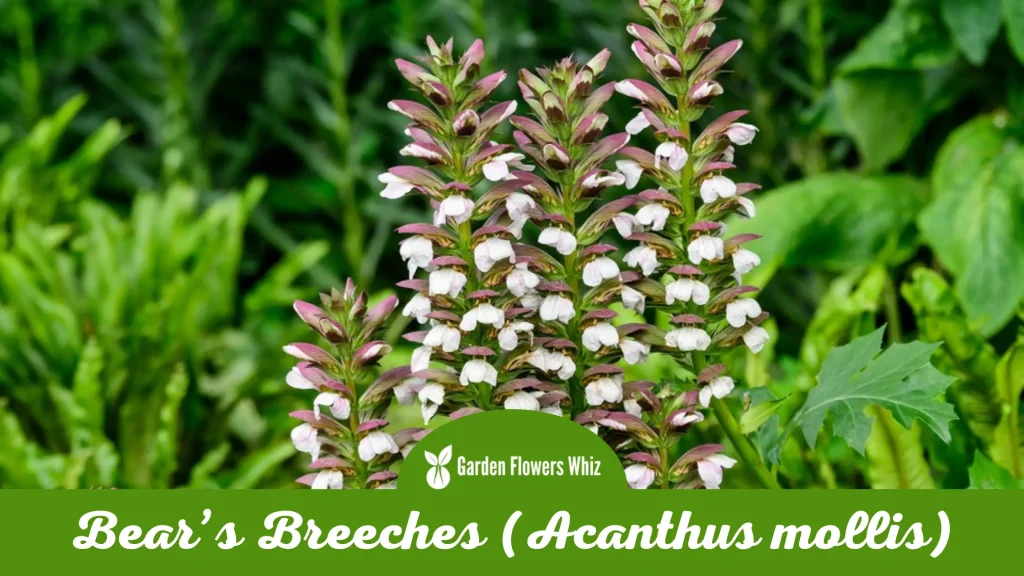
A perennial plant native to the Mediterranean region by the name of Acanthus mollis, sometimes known as “Bear’s Breeches,” is now widely grown in gardens all over the world.
It is a member of the Acanthus family and is distinguished by its beautiful foliage and tall, flamboyant flower spikes. Large, glossy leaves with deep lobes that can reach a height of three feet are the plant’s defining feature.
Usually pink, white, or purple in hue, the blooms are grouped in tall, vertical spikes that can be up to 4 feet tall.
Hardy and capable of growing in both full sun and partial shade, Bear’s Breeches is tolerant of a variety of soil types.
It’s a well-liked option for adding height and texture to the garden, and its eye-catching leaf makes it a perfect choice for borders, specimen plantings, and background plants.
7. Bear’s Breeches (Acanthus hungaricus)

The annual blooming plant known as Bear’s Breeches, or Acanthus hungaricus, is indigenous to central and southeastern Europe.
It belongs to the Acanthus genus and is a close relative of the more well-known Acanthus mollis. The plant is distinguished by its enormous, glossy, deeply lobed leaves and its long, flamboyant flower spikes, which can grow up to 4 feet tall.
Usually pink, white, or purple, the flowers are arranged in upright spikes. Hardy Bear’s Breeches may grow in either full sun or moderate shade and prefers well-draining soil.
It’s a well-liked option for incorporating height and texture into the landscape and is frequently used in borders, as a specimen plant, or as a background plant.
8. Bear’s Breeches (Acanthus “Summer Beauty”)
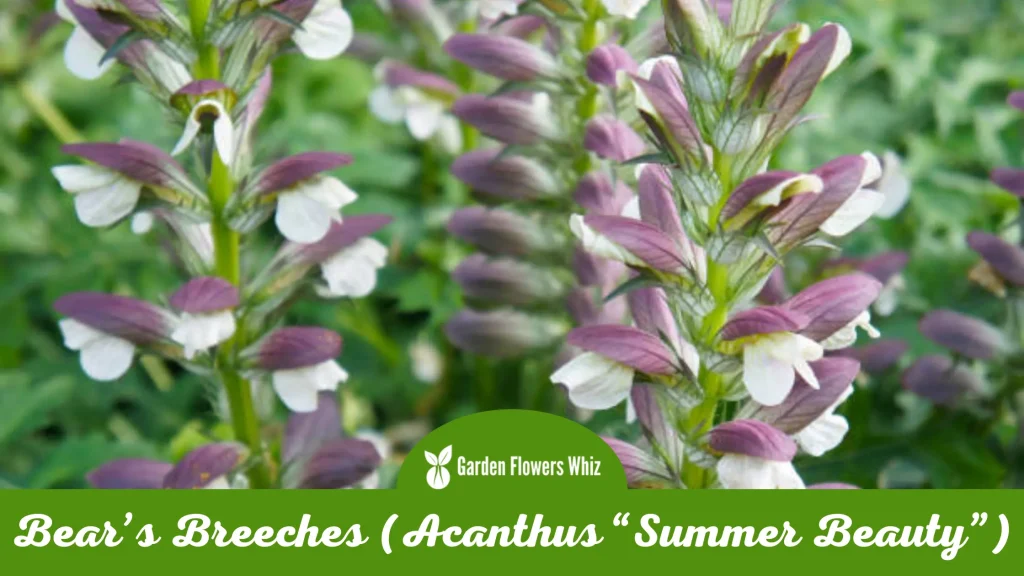
The perennial plant known as Bear’s Breeches, also called Acanthus “Summer Beauty,” is prized for its eye-catching foliage and tall, beautiful flower spikes.
This hybrid cultivar was created especially for its spectacular blossoms and enhanced garden performance.
The plant can reach a height of three feet and has broad, glossy leaves that are strongly lobed. The flowers are often pink or white in color and are grouped in tall, vertical spikes that can be up to 4 feet tall.
They produce a wonderful spectacle in the garden because they bloom in the summer and last a long time. A hardy plant, Bear’s Breeches can thrive in a range of soil types and can withstand both full sun and partial shade.
9. Bay Laurel

The Mediterranean region is home to the evergreen shrub or small tree known as bay laurel or Laurus nobilis.
It belongs to the Laurel family and is well-known for its flavorful leaves, which are frequently used as herbs in cooking. The plant is distinguished by its oval, glossy, dark green leaves that, when crushed, release a spicy, aromatic perfume.
The leaves are used to flavor soups, stews, and sauces in addition to being employed in the creation of wreaths and other decorative objects.
With the correct conditions, the resilient bay laurel plant can reach a height of 30 feet. However, it is frequently cultivated at a smaller size for culinary purposes. It may grow in either full sun or light shade and prefers soil that drains well.
10. Basket of Gold (Aurinia saxatilis)
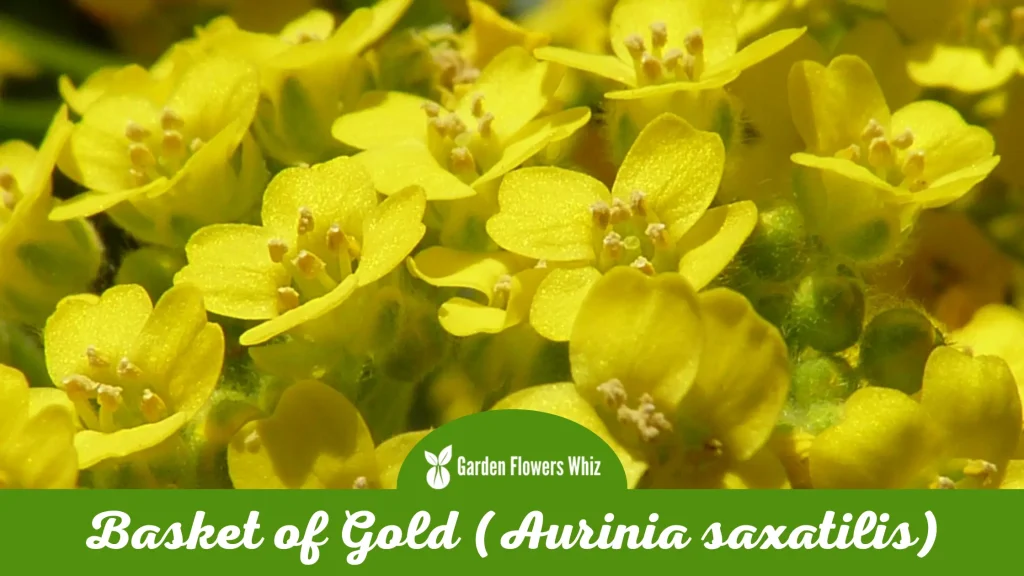
The perennial plant referred to as Basket of Gold, or Aurinia saxatilis, is indigenous to southeast Europe. It belongs to the family Brassicaceae and is recognized by its silvery-green foliage and vivid yellow blossoms.
It is popular for its abundance of small, four-petaled flowers, which in the spring, create a dense, golden carpet and are perfect for rock gardens and borders.
Hardy and able to thrive in both full sun and partial shade, it prefers well-draining soil. When choosing a plant to add a pop of color to their landscape, gardeners frequently choose Basket of Gold.
11. Basket of Gold (Aurinia saxatilis “Gold Dust”)
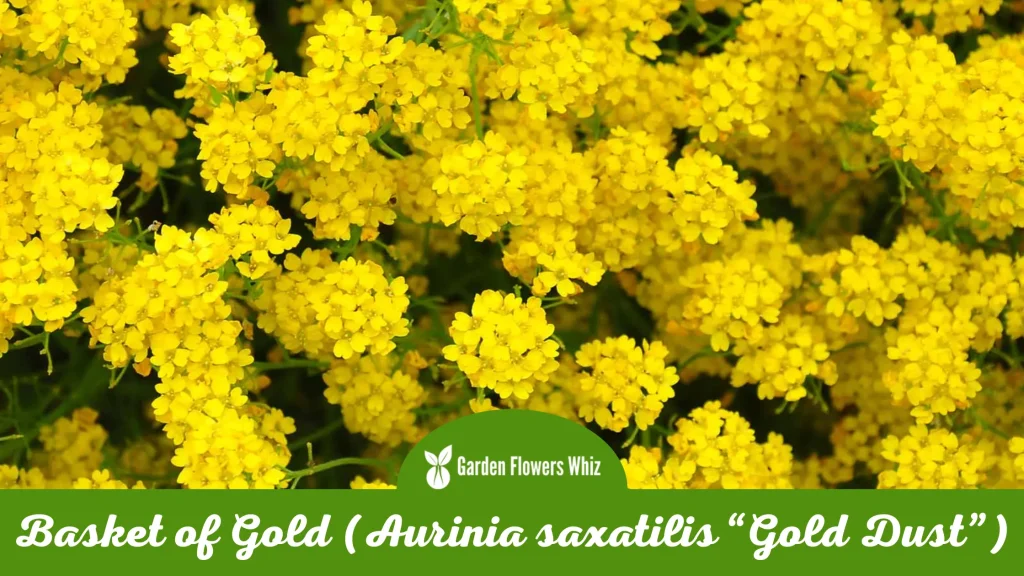
Aurinia saxatilis, popularly known as “Gold Dust,” or a basket of gold, is a low-growing perennial plant that is admired for its silvery-green foliage and dazzling yellow flowers.
It is a native of southeast Europe and a member of the Brassicaceae family. The plant is well-known for its abundance of small, four-petaled flowers that make a dense, golden carpet in the spring and is perfect for rock gardens and borders.
Aurinia saxatilis “Gold Dust” is a cultivated variety of Basket of Gold with even more vivid yellow flowers and a more compact growth habit, making it an excellent choice for containers and small gardens.
12. Banana Shrub
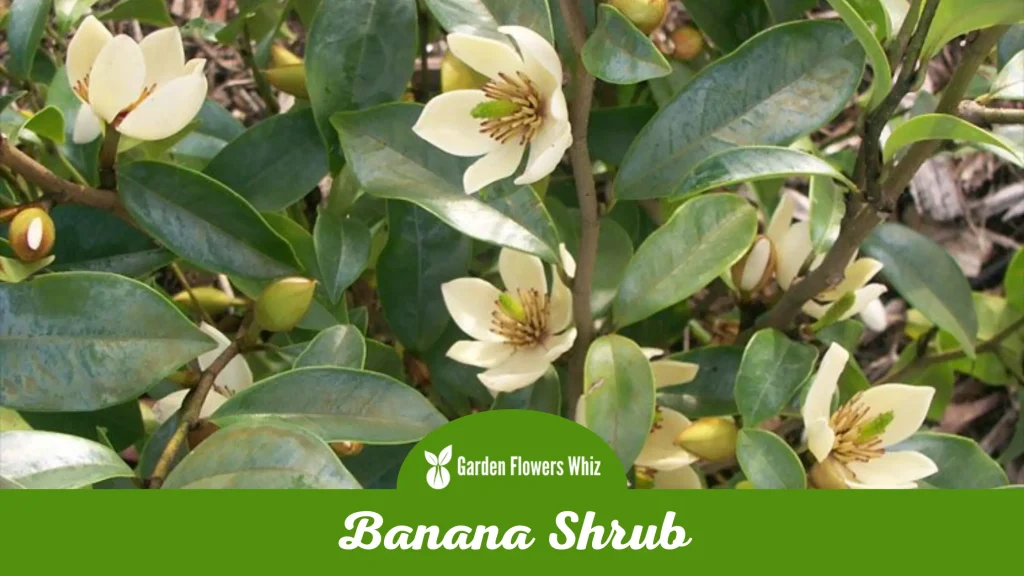
The lovely evergreen plant known as the banana bush, or Michelia figo, is indigenous to Asia. It belongs to the Magnoliaceae family and is admired for both its glossy, dark green leaves and its fragrant, golden blooms.
The plant can reach heights of 15 feet and a width of 10 feet. However, it is frequently kept at a smaller size for simpler maintenance. Because of its eye-catching look and delightful aroma, the banana shrub is a preferred option for hedges, screens, and specimen plantings.
Low-maintenance banana shrubs favor well-drained soil and moderate shade as opposed to full sun. It is a fantastic option for a range of garden designs and regions because it is drought-tolerant and can endure the light cold.
13. Balloon flower (Platycodon grandiflorus)
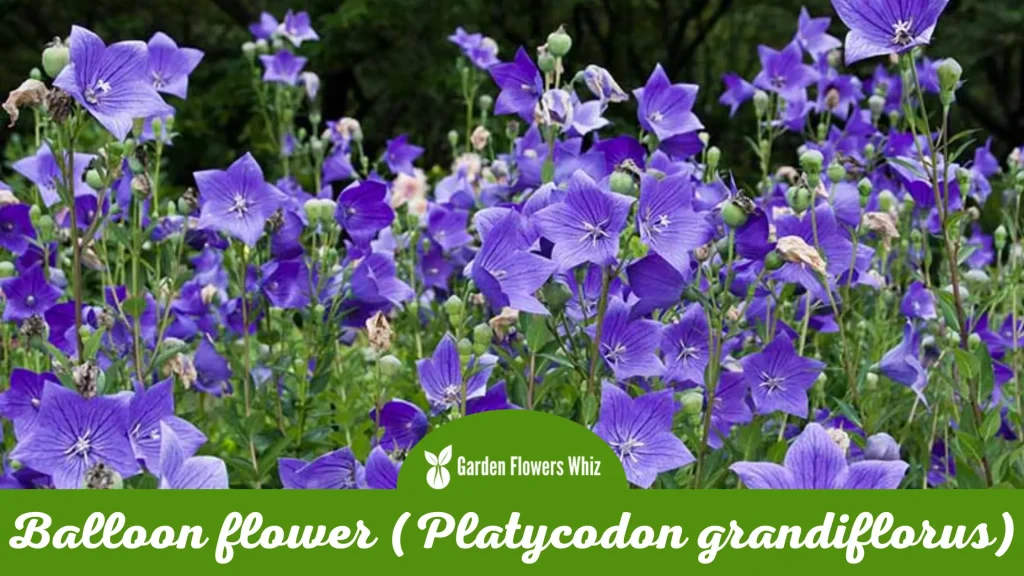
The perennial plant known as balloon flower, or Platycodon grandiflorus, is indigenous to East Asia. It belongs to the family Campanulaceae and is distinguished by its eye-catching blue or white star-shaped flowers that resemble balloons before opening.
The plant’s unusually inflated buds, which open to show exquisite blooms, are where it derives its common name. Mid- to late-summer blooming balloon flowers are a favorite for borders, rock gardens, and containers.
14. Balloon flower (Platycodon grandiflorus “Astra Blue”)

The common perennial plant Platycodon grandiflorus, popularly known as balloon flower, is indigenous to East Asia. The plant, which belongs to the Campanulaceae family, is prized for its eye-catching star-shaped flowers, which seem like balloons before opening.
The “Astra Blue” type of balloon flower, which blooms in the middle to end of summer, is widely regarded for its vivid blue blossoms.
15. Ball Cactus (Parodia Magnifica)
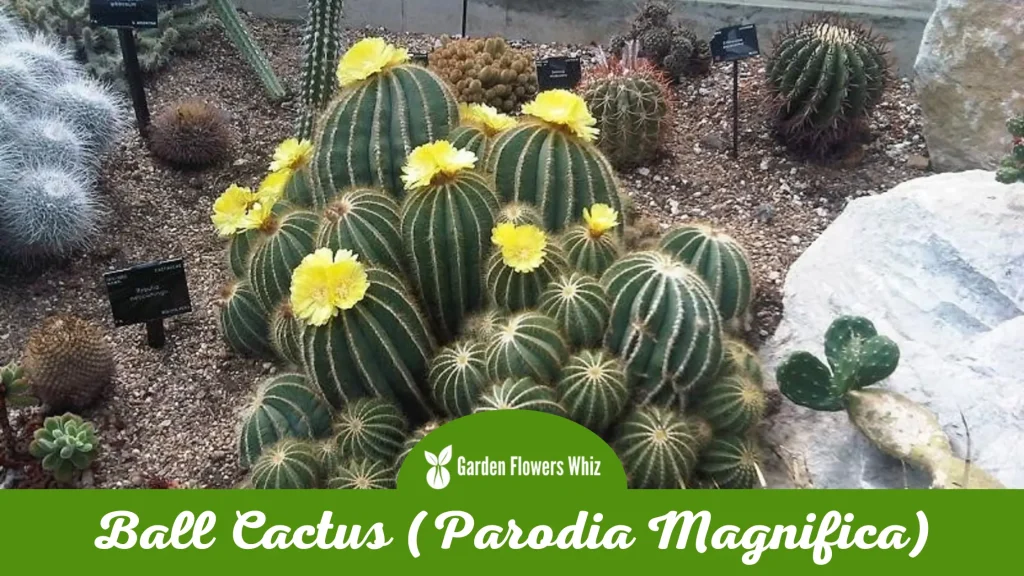
South America is the home of the Ball Cactus, sometimes referred to as Parodia Magnifica. It is a treasured member of the Cactaceae family and is renowned for its remarkable spherical shape and lovely blossoms.
The unique spines that make up the thick, protective covering of this cactus, which generally grows to be about 6 inches in diameter, are visible.
A spectacular, yellow blossom with a diameter of two to three inches is produced by the Ball Cactus in the summer. A hardy plant that can be grown indoors or outdoors and requires little maintenance is the ball cactus.
It favors full sun as opposed to partial shade and well-draining soil. It’s crucial to place the cactus near a window that gets plenty of sunlight when it’s being cultivated indoors and to avoid overwatering it.
16. Baby’s Breath (Gypsophila paniculata “Bristol Fairy”)

Gypsophila paniculata, popularly known as baby’s breath, is a delicate and well-known herbaceous plant from the Caryophyllaceae family. A cultivar of the plant known as “Bristol Fairy” is widely regarded for its stunning profusion of white blossoms.
Thousands of these tiny, fluffy blossoms are produced by this plant, covering it in an appearance like a cloud. It is a resilient plant that is simple to grow and care for.
Child’s Breath Up to 3 feet tall, “Bristol Fairy” enjoys full sun and soil that drains well. If you want to create a romantic and dreamy ambiance in your garden, this plant is a great option.
It frequently serves as a filler plant in cut flower bouquets, giving floral displays more volume and texture. It’s a common option for bridal bouquets and other formal occasions.
17. Baby Blue Eyes (Nemophila menziesii)
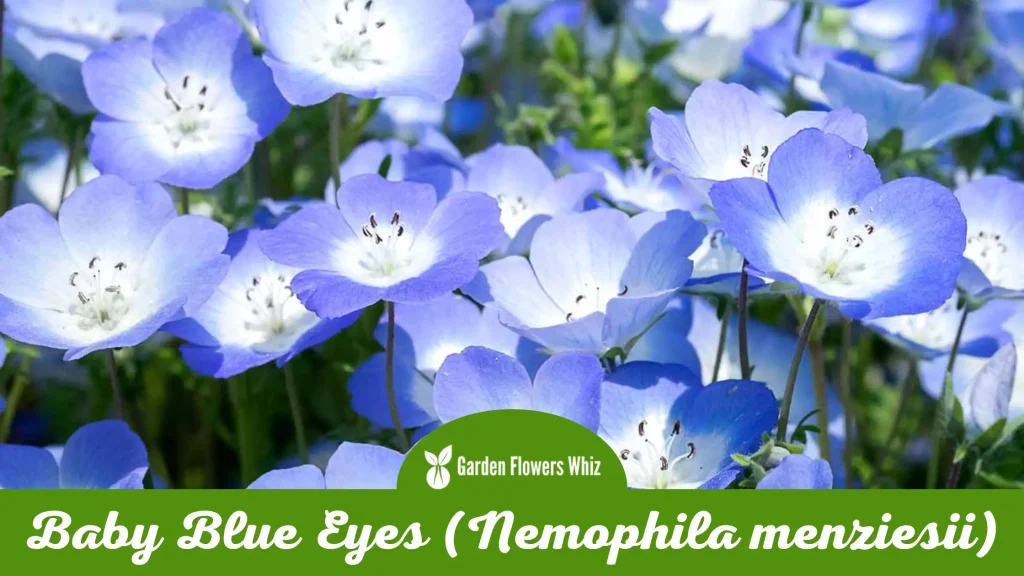
Nemophila menziesii, popularly known as baby blue eyes, is a pretty annual wildflower in the Boraginaceae family.
This plant, which is indigenous to the western United States, is highly valued for its stunning blue blossoms, which resemble a baby’s eyes.
Baby Blue Eyes has five circular petals, and its flowers are typically 1-1.5 inches in diameter. The plant itself blooms from spring to early summer and reaches a height of around 6 to 12 inches.
Baby Blue Eyes is a reasonably simple plant to grow, making it ideal for novice gardeners. It is the perfect plant to plant in locations with mild shade or in the understory of trees because it prefers well-draining soil and partial shade.
This type of wildflower is frequently used to provide a pop of color to gardens and borders. Meadows and wildlife habitats can also be created using it in natural landscaping.
It is also a favorite of butterflies and bees, making it an important plant for the conservation of pollinators.
18. Buttercup
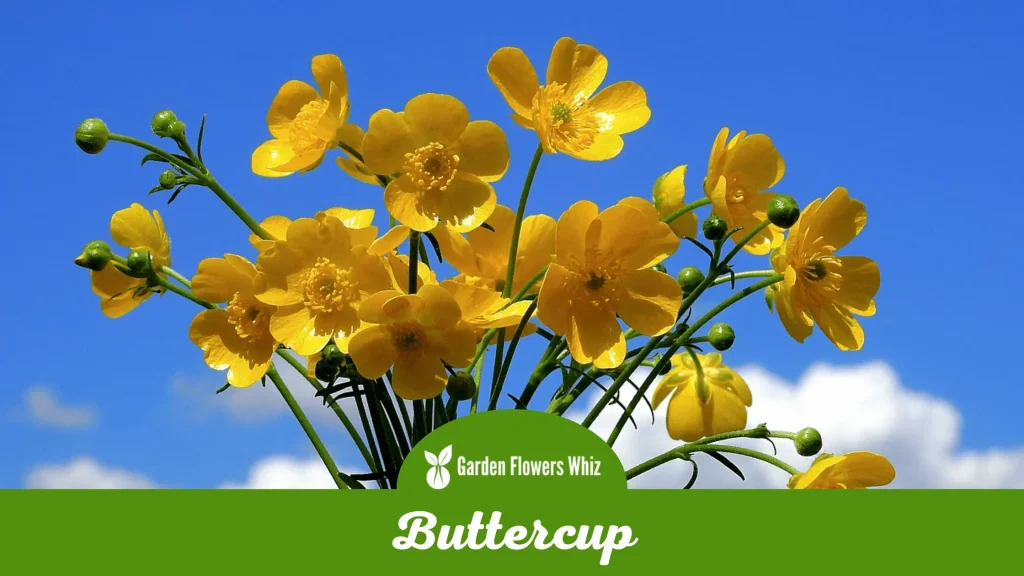
The common term “buttercup” refers to a genus of roughly 600 species of flowering plants in the Ranunculaceae family.
These worldwide natural plants are distinguished by their vivid and ostentatious golden blossoms. The Buttercup plant is a perennial herbaceous plant that normally reaches a height of 12 to 18 inches.
Its 5-7 glossy petals and bright yellow flowers are about 1-2 inches in diameter. Despite the fact that the buttercup is a lovely flower, it’s crucial to be aware that many kinds are poisonous and can lead to skin irritation or other health problems if consumed.
Ranunculin, a poisonous substance found in the plant, can lead to blisters and other skin issues.
They are simple to grow and work well in a variety of environments, including borders, rock gardens, and wildflower meadows. Furthermore, useful plants for pollinators draw butterflies and bees to the yard.
19. Bush Morning Glory

Convolvulus cneorum, popularly known as bush morning glory, is a stunning evergreen shrub from the Convolvulaceae family.
This plant, which is native to the Mediterranean area, is highly regarded for its exquisite pink or white flowers, which bloom from late spring through summer.
Bush morning glory flowers have five circular petals that are white or pink with a yellow center, and they have a diameter of around 1 inch.
The plant itself has silver-green, slightly hairy leaves and gets up to 2-3 feet tall and wide. Hardy bush morning glory needs full sun and soil that drains well.
It’s comparatively low-maintenance and ideal for gardeners searching for a lovely but low-maintenance plant. It is frequently used as a container plant, in borders, and in rock gardens.
Bush morning glory is not only attractive, but it also serves as an important plant for pollinators, luring bees and butterflies to the garden.
20. Buddleja
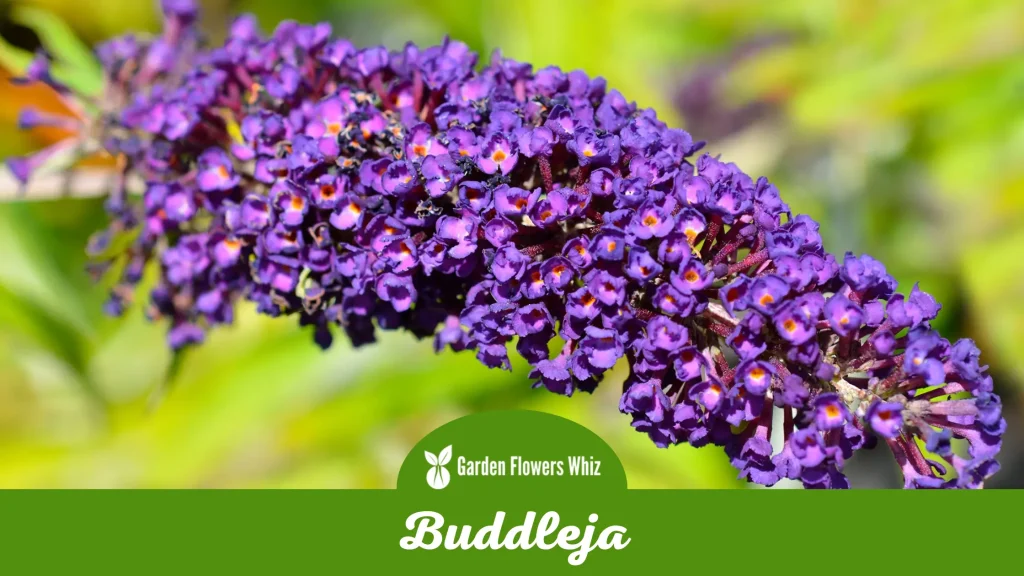
Buddleja is a genus of flowering plants in the Scrophulariaceae family, also known as butterfly bush.
These plants, which are native to Asia, Africa, and the Americas, are prized for their exquisite and enticing blossoms, which draw a broad range of butterflies and other pollinators to the garden.
The Buddleja plant normally attains heights and widths of between 6 and 10 feet, with long, arching branches adorned with clusters of tiny, tubular flowers.
The flowers come in a wide range of colors, including white, pink, purple, and blue, and bloom from summer through fall. Hardy and simple to grow, buddleja prefers full light and well-drained soil.
It is frequently used as a screen or hedge plant, as well as in cottage gardens and borders. Gardeners who want to draw pollinators to their gardens highly value it as well.
It’s crucial to remember that the plant can be invasive in some regions and needs to be closely watched.
21. Bouvardia
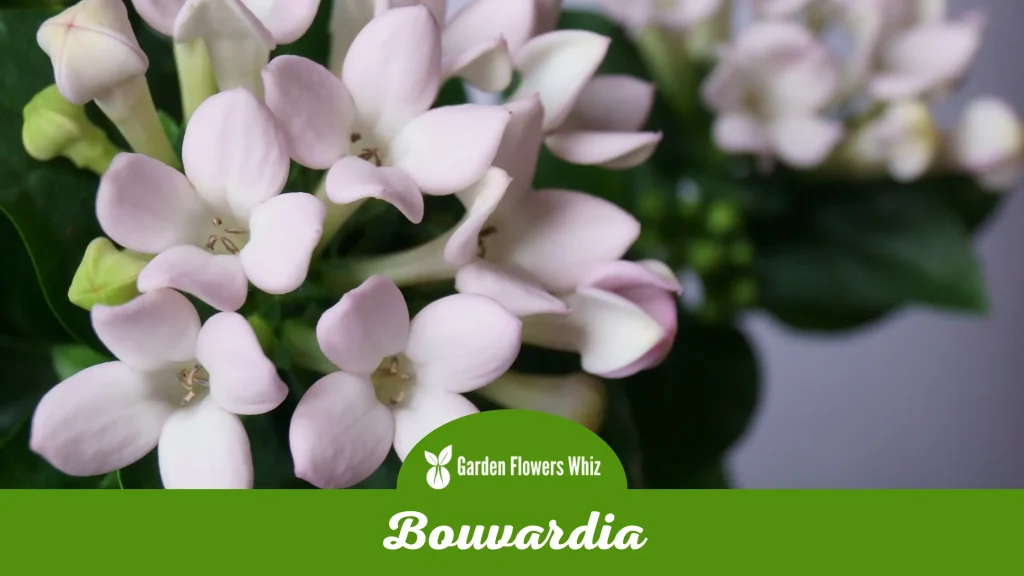
The Rubiaceae family, which has more than 50 species of shrubs and small trees that are indigenous to Central and South America, includes the genus Bouvardia of flowering plants.
The gorgeous, fragrant flowers on these plants, which come in a variety of hues, including white, pink, red, and orange, are highly coveted.
The normal height and width of a bouvardia plant are between two and four feet. It has glossy, dark-green foliage and clusters of trumpet-shaped flowers.
They are frequently cultivated as attractive plants in greenhouses and gardens, and they are well-liked by florists for use in cut flowers for floral arrangements.
Bouvardia can be cultivated in full sun to partial shade and requires just moderate maintenance. During the growing season, it prefers regularly watered soil with good drainage.
Bouvardia can be grown inside in cooler areas.
22. Blue Star Flower
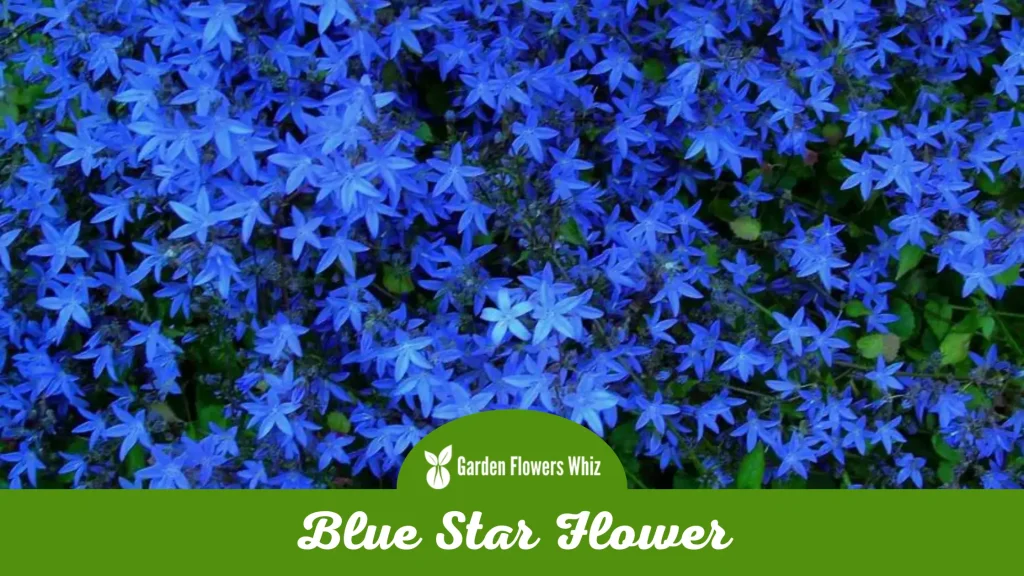
Apocynaceae, or dogbane family, includes roughly 20 species of flowering plants in the genus Blue Star Flower, also known as Amsonia.
They are treasured for their lovely blue star-shaped flowers, which bloom in late spring to early summer, and are native to North America.
The lance-shaped leaves of the Blue Star Flower have a three-foot maximum height and width and turn golden-yellow in the fall.
The five slender, pointed petals of the flowers are a vivid blue color that can range from light to deep blue.
The flowers endure for a long time and draw pollinators like bees and butterflies. A low-maintenance plant that is simple to grow and maintain is the blue star flower. It enjoys full sun to partial shade and well-drained soil.
These plants can survive in a range of environments and are drought-tolerant. Moreover, they are resistant to deer, which makes them a suitable option for gardens in regions with significant deer populations.
All things considered, the Blue Star Flower is a lovely and simple-to-grow plant that provides a splash of blue to any yard.
23. Blue-Eyed Grass
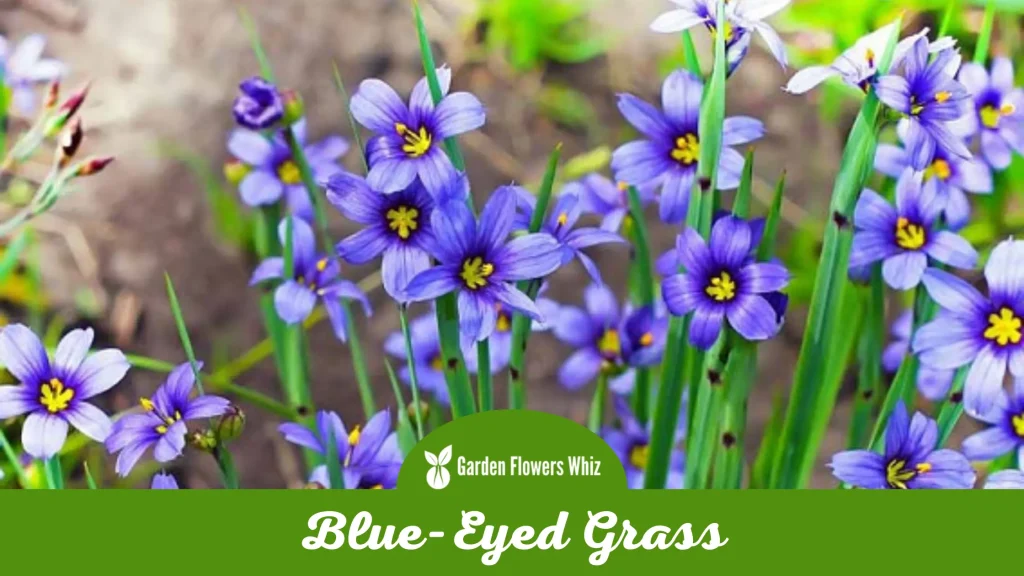
The Iris family includes perennial flowering plants like blue-eyed grass, sometimes referred to as Sisyrinchium. Contrary to its name, blue-eyed grass is actually a herbaceous plant that bears beautiful blooms in blue, purple, and white hues.
Throughout the spring and summer, the plant blooms, producing clusters of star-shaped flowers on long, thin stalks, along with grass-like leaves.
The six-petalled, generally one-inch-diameter flowers have a characteristic yellow center that gives them their “blue-eyed” appearance.
Blue-eyed grass is best in moist, well-drained soil and prefers to grow in full sun or light shade. It may be cultivated in a range of soil types, including sandy or rocky soil, and requires little maintenance.
It is a fantastic option for lawns or borders because it is drought-resistant and tolerant of occasional foot traffic.
Beautiful and adaptable, blue-eyed grass can offer a splash of color to any garden or landscape.
24. Bluebell

The Bluebell is a spring-blooming bulb that is indigenous to Western Europe and is also known by the scientific name Hyacinthoides non-scripta. It is a well-liked garden plant that bears gorgeous clusters of small, bell-shaped blooms in blue, pink, and white hues.
The flowers typically have six joined petals at the base and are around 2 cm long. Bluebells flourish best in soil that is well-drained and partially shaded, which makes them perfect for forest gardens and shaded places.
They frequently grow in woodlands and hedgerows and do best in milder regions. Folklore has long connected the bluebell with the arrival of spring and the rebirth of the natural world.
Bringing bluebells into the house is frowned upon in some cultures since it is believed that doing so will result in a family member passing away.
Yet gardeners love the Bluebell because of its beauty, and it is a welcome sight in any spring garden.
25. Bleeding Heart
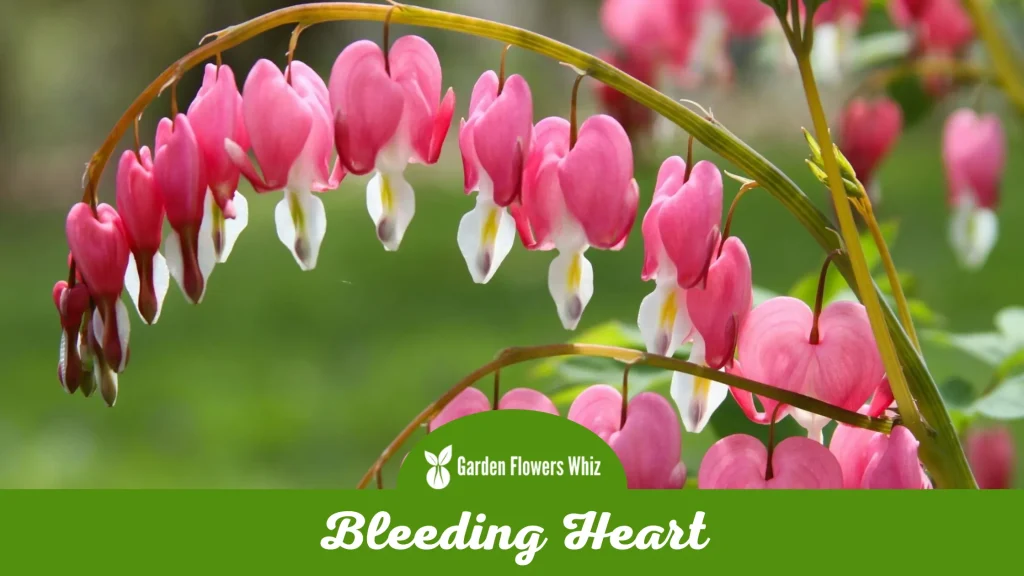
The Bleeding Heart, also known as Lamprocapnos spectabilis, is a well-known perennial with spring blooms that is indigenous to Siberia, northern China, and Japan.
Its characteristic appearance comes from the plant’s arching stems covered with clusters of heart-shaped, pink, or white blooms that hang from the branches.
The flowers can remain for several weeks and normally bloom in late spring and early summer. The best conditions for growing a bleeding heart are light shade and well-draining soil.
It is a tough plant that can endure conditions as cold as -30 degrees Fahrenheit. The plant has become popular in gardens and flower arrangements due to its reputation for having a delicate and romantic appearance.
Traditional medicine has utilized The Bleeding Heart for its anti-inflammatory and diuretic effects. All plant parts, however, are poisonous if consumed; thus, neither people nor animals should eat them.
The Bleeding Heart flower is still a well-known and iconic flower in gardens all over the world despite its toxicity.
26. Blazing Star
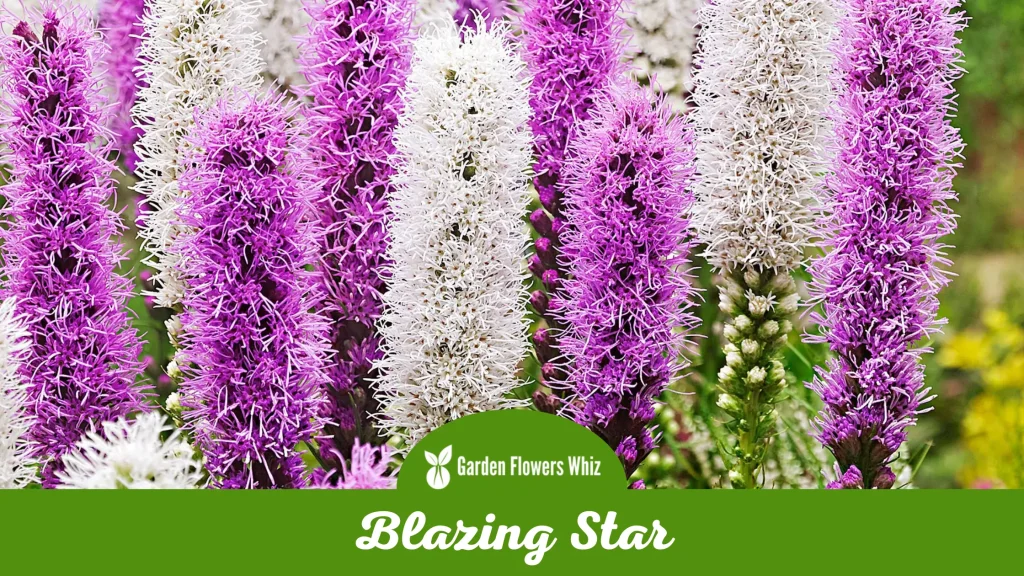
The tall and flamboyant perennial Blazing Star, also known as Liatris spicata, is a native of the grasslands of North America.
The plant develops flower spikes up to 4 feet tall with pink or purple blooms that lend a vertical flare to any garden or landscape.
In the middle of the summer, the blooms blossom, luring bees, butterflies, and other pollinators. Blazing Star is simple to grow and care for, and it does best in full light and soil that drains well.
It is a resilient and versatile plant that can tolerate drought and a variety of climates.
Because of its colorful blossoms and distinctive shape, Blazing Star is a preferred selection for gardens and landscaping. It is frequently used as a cut flower in bouquets and floral arrangements to give height and texture to the design.
27. Blanket Flower

The colorful perennial Gaillardia, sometimes referred to as the blanket flower, is a native of North and South America. The flower’s remarkable look, with its vivid red and yellow petals that resemble a warm and inviting blanket, is what makes it so well-known.
In the summer and fall, blanket flowers bloom, bringing a splash of color to any garden or landscape. They are a fantastic choice for both seasoned and inexperienced gardeners because they are simple to cultivate and require little upkeep.
Although blanket flowers can survive some shade and drought, they do best in full sun and well-draining soil. They are frequently used in butterfly gardens because they draw a variety of pollinators, such as butterflies and bees.
Aside from being utilized in cut flower arrangements, the blooms can also be used as a natural fabric dye.
28. Black-Eyed Susan
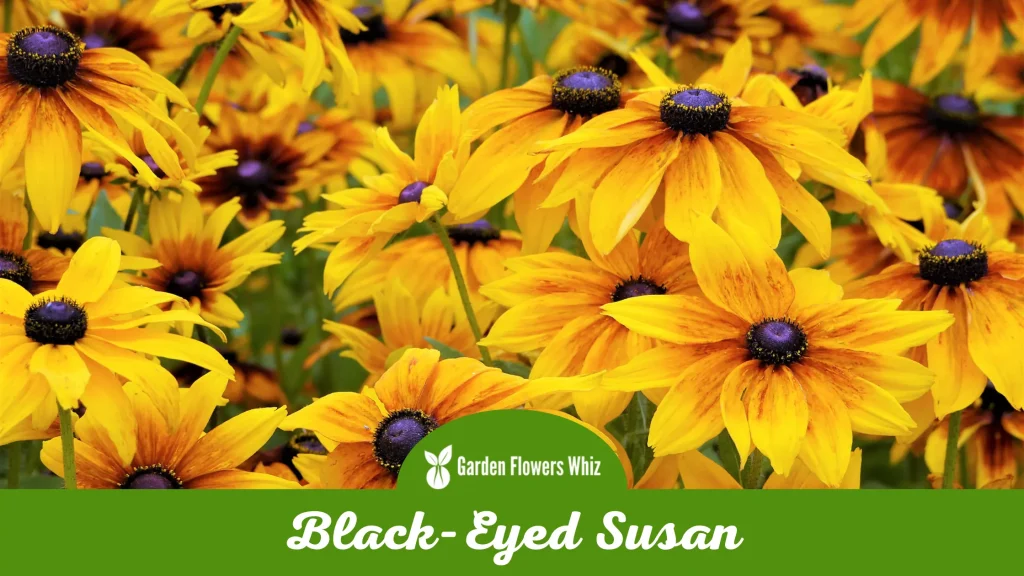
The Black-Eyed Susan, often called Rudbeckia hirta, is a perennial plant that grows naturally throughout North America.
Due to its remarkable appearance—bright golden-yellow petals and a distinctive dark brown center that resembles an eye—it is a well-liked garden flower.
Black-Eyed Susans are useful in borders, rock gardens, and wildflower meadows because they bloom in the summer and fall.
Black-Eyed Susans can withstand moderate shade and drought but do best in full sun and soil that drains well. Both seasoned and beginning gardeners favor them since they are simple to grow and require minimal upkeep.
The flowers are also well-liked as cut flowers and draw a variety of pollinators, including butterflies and bees.
It is a preferred option for gardeners of all skill levels due to its cheery appearance, ease of growth, and capacity to draw pollinators.
29. Bergenia
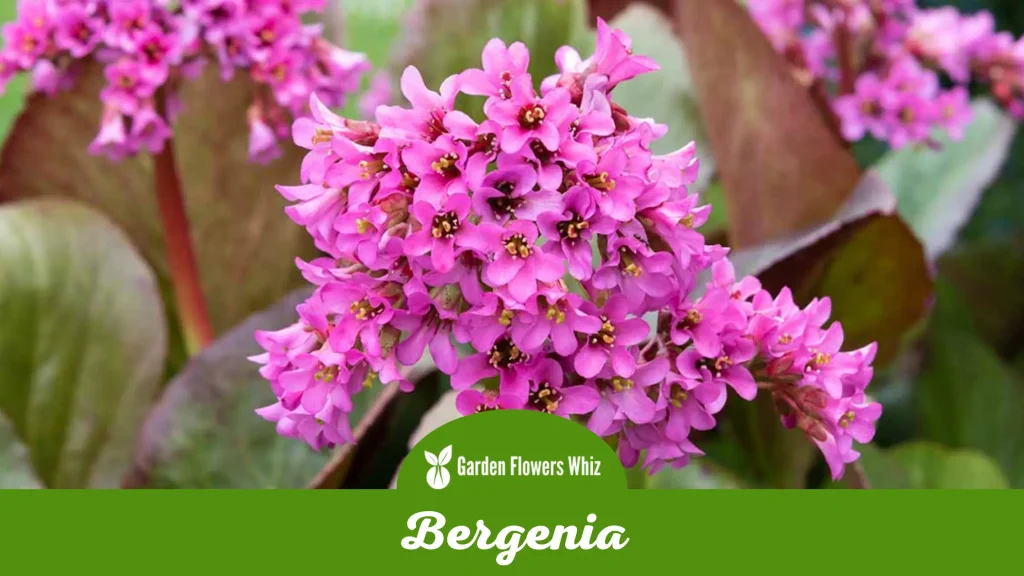
The herbaceous perennial bergenia, commonly referred to as elephant’s ears is indigenous to central and eastern Asia. It is a hardy plant that is frequently used as a border accent, in rock gardens, or as a ground cover.
The early-spring flowering clusters of pink, crimson, or purple bergenia are well-known for their huge, leathery leaves that resemble elephant ears.
Bergenia needs well-draining soil and does best in light shade to full sun. It is a well-liked option for gardeners because it requires little upkeep and is simple to look after.
It is a distinctive and eye-catching addition to any garden or landscape because of its big leaves and vivid blossoms.
30. Bellflower
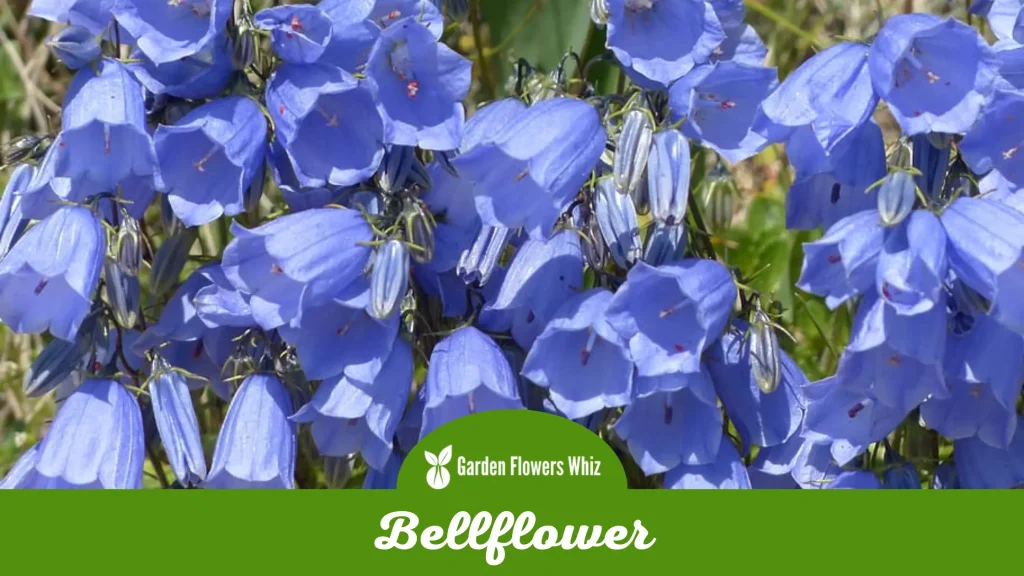
Bellflowers are a group of perennial flowering plants that are indigenous to the Northern Hemisphere and are also referred to as Campanula.
There are numerous types of bellflowers that come in a variety of sizes, including ground covers and tall spikes, and a variety of colors, including blue, purple, pink, and white.
For their brilliant, bell-shaped flowers that bloom from late spring to mid-summer, they are well-liked in gardens. Bellflowers favor soil that drains properly and full sun over partial shade.
Both inexperienced and seasoned gardeners will find them to be an excellent choice because they are reasonably simple to care for and need little upkeep.
31. Begonia
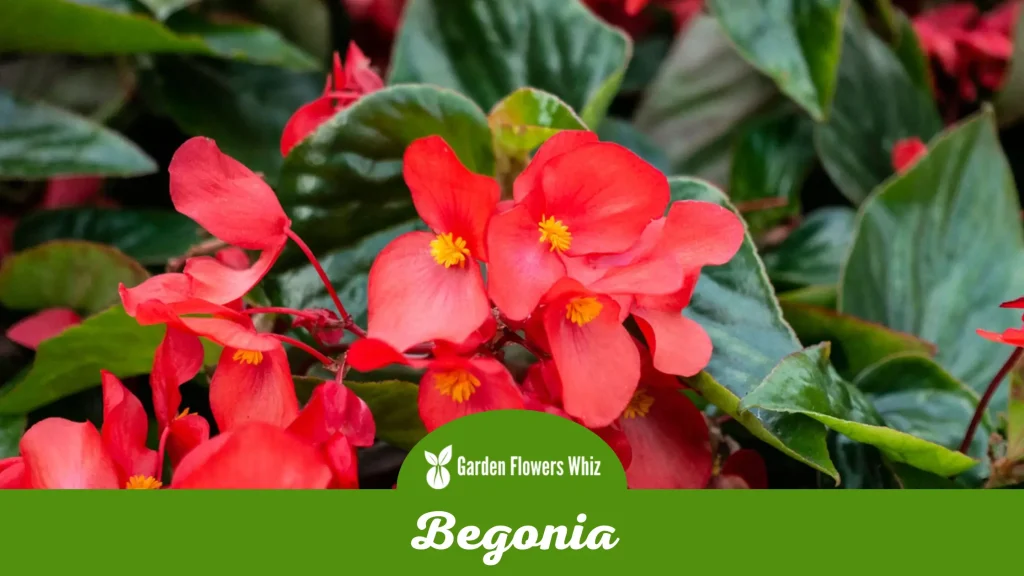
Popular flowering plants known as begonias are indigenous to tropical and subtropical climates. They come in a variety of hues and sizes and are frequently grown for their stunning, showy blossoms.
Begonias are well-liked as both indoor and outdoor plants and are renowned for being low-maintenance and simple to grow. Begonias prefer moist, well-draining soil and some shade, while in colder locations, they can take full sun.
32. Bee Balm Flower
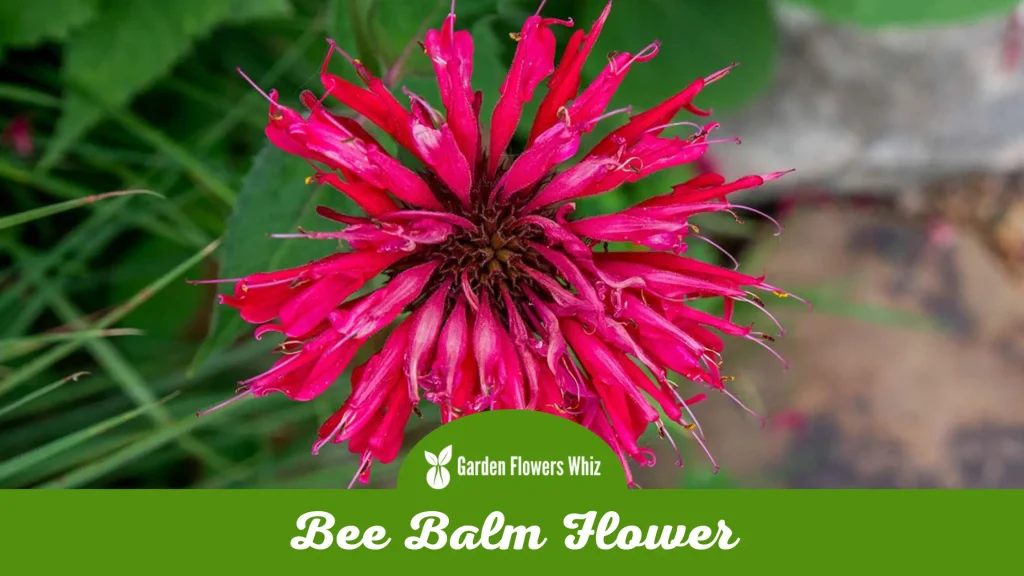
The herbaceous perennial plant Bee Balm sometimes referred to as Monarda, is indigenous to North America. It belongs to the mint family and has a unique square stem like other members of this family.
The plant is well-known for its eye-catching, vividly colored flowers, which open in mid-to-late summer. Pollinators, notably bees, and butterflies, like the pink, red, purple, and white hues of Bee Balm blossoms. Bee Balm favors wet, well-draining soil and full sun over partial shade.
33. Balloon Flower
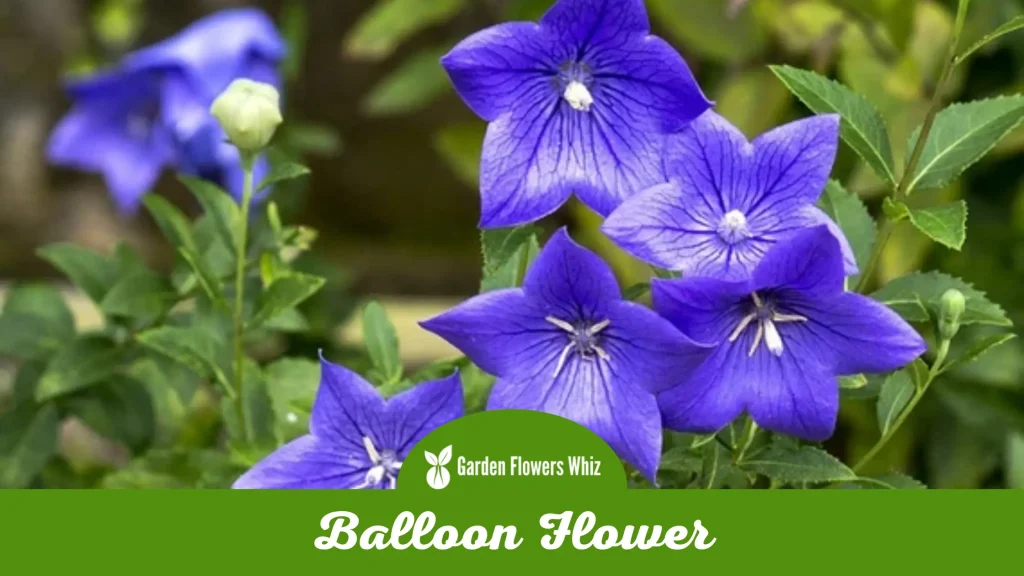
East Asian native Platycodon grandiflorus, popularly known as balloon flower, is a herbaceous perennial plant. The plant is well known for its unusual balloon-shaped buds, which open to reveal stars-shaped blooms in blue, white, and pink hues.
Gardeners love balloon flowers for their gorgeous petals and low maintenance requirements. It blooms in the middle to the end of the summer.
34. Bachelor’s Button

Centaurea cyanus, sometimes known as bachelor’s button, is a tough annual plant that is indigenous to Europe and Asia. It belongs to the daisy family and is distinguished by its vivid blue blossoms.
Due to its ease of cultivation, resistance to drought, and ability to draw bees and butterflies to the garden, the bachelor’s button is a well-liked plant.
Bachelor’s Button likes soil that drains well and full sun. It is an easy-to-care-for plant that is frequently planted in cottage gardens and wildflower meadows.
The plant produces flowers in varying hues of blue, pink, white, and purple when it blooms in mid-to-late summer. Gardeners of all skill levels favor it because of its eye-catching blue blossoms and capacity to draw pollinators.
35. Baby’s Breath
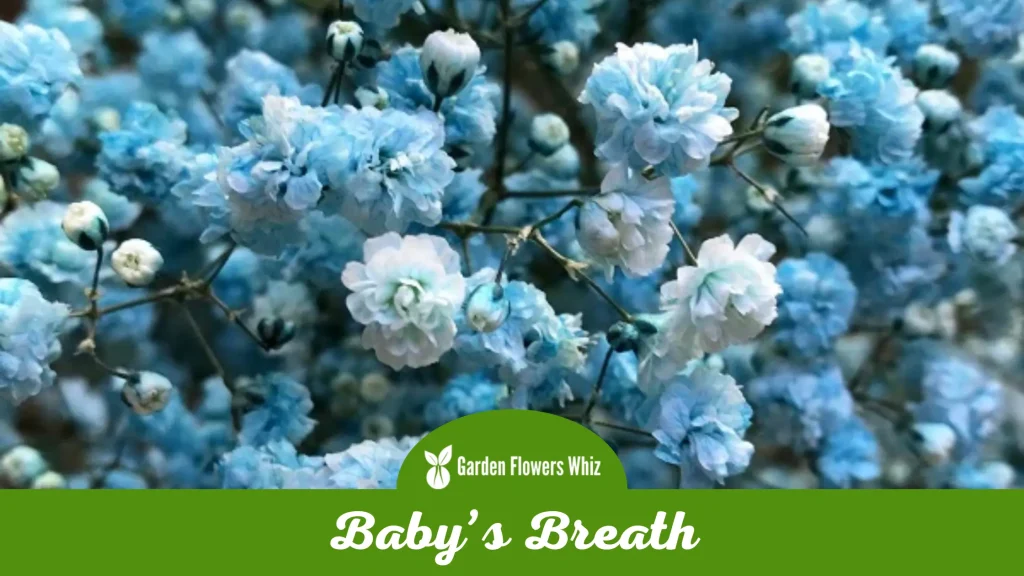
Gypsophila, sometimes referred to as baby’s breath is a delicate and airy flowering plant that is indigenous to Eurasia. It belongs to the family of carnations and is distinguished by its small, white, or pink flowers, which are borne in clusters on tall, slender stems.
Due to its ease of cultivation, resistance to drought, and ability to draw pollinators like butterflies, baby’s breath is a common garden plant.
Baby’s Breath prefers soil that drains well and is full of light. It is a low-care plant that is frequently used as filler in bouquets and other floral arrangements.
The plant produces an abundance of tiny, delicate flowers in mid to late summer when it blooms.
In Summary
The voyage of discovering the universe of flowers that starts with B has been intriguing. Each flower has its own distinct charm and personality, from the baby’s breath’s delicate delicacy to the black-eyed Susan’s stunning aggressiveness.
But it’s possible that these flowers’ collective qualities, rather than their individual characteristics, are what makes them so spectacular. Together, they form a dynamic tapestry of color and life.

Stacey Hernandez is a seasoned botanist with over 16 years of experience in the field. Her passion for plants and their intricate workings began at a young age, and she has since devoted her life to studying and understanding them.
Stacey’s expertise extends to a wide range of plant species, from delicate flowers to towering trees. As the founder of Garden Flowers Whiz, Stacey has created a platform for plant enthusiasts to seek guidance and advice.
Her website is a go-to resource for those seeking answers to their gardening dilemmas, whether it’s how to care for a particular plant or which species to choose for a specific climate.
